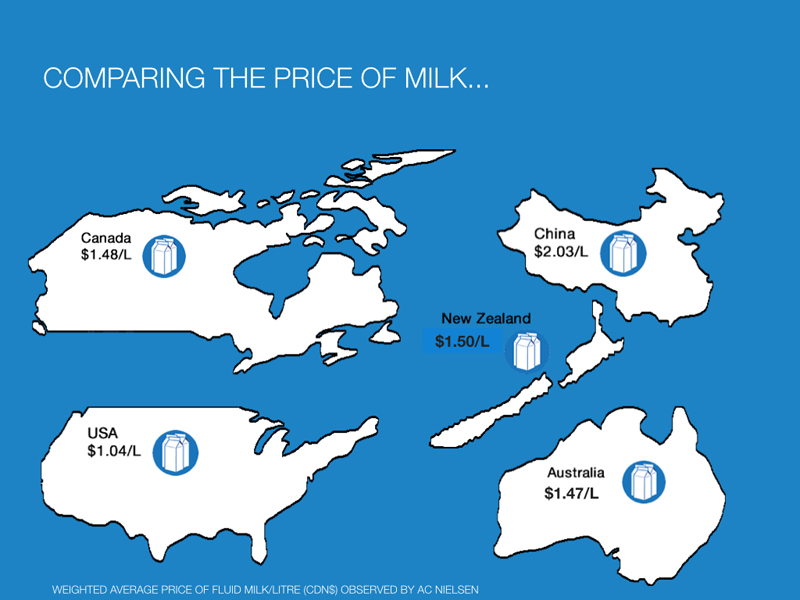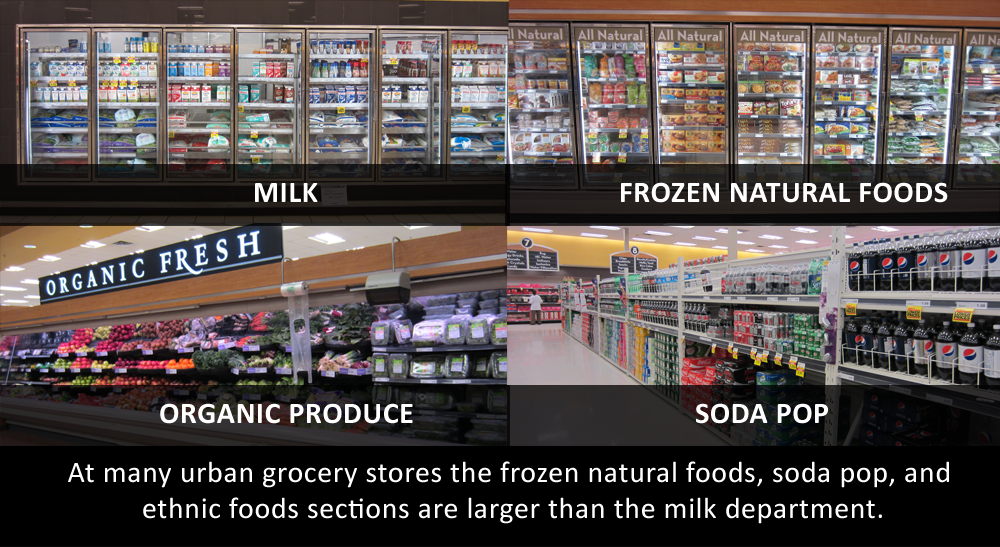Explore the contrasts in dairy farming across Canada and the USA. Which nation provides superior opportunities and practices for its dairy farmers? Uncover the insights here.
Picture this: a sprawling dairy farm in rural Ontario and another in the heartland of Wisconsin. Their farming practices, regulations, and philosophies can vary dramatically despite being neighbors. This comparison reveals how geographical, economic, and regulatory factors shape dairy farming in each nation.
Understanding these differences matters not just for farmers but also for consumers and policymakers. By examining dairy farming on both sides of the border, we uncover unique challenges, advantages, and lessons each country can learn from the other.
We will explore:
- Regulations and their impact on production
- Economic factors and dairy market trends
- Adoption of technological advancements
- Sustainability practices
- Cultural influences
This comparative analysis will highlight the unique attributes of dairy farming in each country and identify opportunities for collaboration. Our journey navigates through policy landscapes, economic realities, technological advancements, and cultural nuances, providing a comprehensive understanding of this essential agricultural domain.
Tracing the Divergence: The Historical Paths of Dairy Farming in Canada and the USA
Dairy farming in Canada and the USA evolved with distinct milestones and events shaping each country’s industry. In the USA, small-scale farms initially focused on self-sufficiency during the early colonial period. The 19th century saw significant transformation with industrialization and urbanization. Railroads allowed dairy products to reach urban markets efficiently, commercializing the industry. Key developments such as the first dairy cooperative, the cream separator, and pasteurization in the late 1800s propelled growth.
Canada’s dairy farming history also began with small-scale, subsistence farms but took a distinctive turn with the introduction of supply management in the 1970s. This system stabilized the market by matching production with national demand, diverging from the USA’s market-driven approach.
World War II played a critical role in both industries. In the USA, the war effort drove significant increases in dairy production, supported by technological advancements and government policies post-war. In Canada, post-war reconstruction and policies encouraged dairy farming for national food security.
While both countries started with small-scale dairy farming, industrialization, innovation, historical events like World War II, and governmental policies sculpted two distinct paths. The USA’s market-driven growth contrasts Canada’s regulated approach, reflecting their unique historical contexts.
Divergent Regulatory Frameworks: Comparing Canadian and American Approaches to Dairy Farming
Canada and the USA take notably different approaches to regulating dairy farming, each with unique mechanisms to stabilize their industries. This divergence is evident in supply management, quota systems, and government subsidies.
Supply Management Systems: Canada operates under a stringent supply management system to balance supply and demand, ensuring farm gate prices cover production costs. This involves production quotas, controlled imports, and price adjustments, giving farmers stable prices and reduced market volatility with predictable income.
In contrast, the U.S. dairy market operates on free-market principles, where supply and demand dictate prices. This can lead to significant price fluctuations, exposing farmers to market volatility. Fostering competitive pricing and innovation also imposes more substantial financial uncertainty.
Quota Systems: Canada’s quota system is central to its supply management framework. Each farm is allocated a production quota, which can be bought, sold, or leased. This system prevents overproduction and stabilizes market prices, aligning output with national consumption rates.
The U.S. lacks a nationwide quota system, relying instead on regional cooperative programs and less comprehensive state-specific initiatives. This often leads to challenges like overproduction and price suppression for American farmers.
Government Subsidies: In the U.S., government subsidies such as the Dairy Margin Coverage (DMC) help mitigate losses due to falling milk prices and rising production costs. These subsidies provide a financial safety net for farmers during adverse market conditions.
Canadian farmers receive government support indirectly through high tariffs on imported dairy products beyond set quotas. These tariffs protect them from competition and price undercutting, allowing them to maintain financial viability without extensive subsidies.
These regulatory differences significantly impact farmers. In Canada, supply management and quota system stability aid long-term planning and consistent production levels, though critics argue it raises consumer prices. U.S. farmers benefit from subsidies but face greater market unpredictability. This reflects the broader agricultural policies of the two nations—Canada favors market control and domestic protection, while the U.S. leans towards market freedom and competitiveness.
Economic Dynamics of Dairy Farming: A Comparative Analysis of Canada and the USA
When comparing the economic aspects of dairy farming in Canada and the USA, numerous factors like production costs, milk prices, and profitability come into play. In Canada, the supply management system defines the economic landscape, balancing supply and demand while ensuring farm gate prices cover production costs. This system offers Canadian farmers a stable income through production quotas and import controls, shielding them from international market volatility.
American dairy farmers, however, operate in a market-driven environment influenced by domestic and international market forces. This leads to a more volatile economic situation, which is evident in Wisconsin’s dairy crisis, where low milk prices and high production costs are standard. The USMCA aims to protect US producers, but challenges remain.
Production costs differ notably between the two. Canadian farmers benefit from high biosecurity, animal welfare, and health standards imposed by the Canadian Food Inspection Agency, which, while costly, are offset by stable prices under supply management. American farmers often face lower regulatory costs but must invest heavily in scale and efficiency due to the lack of similar protections.
Canadian farmers, assured by a stable pricing model, are generally better positioned against market shocks. In contrast, US farmers face fluctuating milk prices and input costs, making profitability more precarious. Thus, while Canadian dairy farmers navigate a regulated economic environment, their American counterparts deal with higher risks and potential rewards in a market-oriented system.
The Structural Composition and Scale of Dairy Farms in Canada and the USA: A Contrast in Agricultural Paradigms
The structural composition and scale of dairy farms in Canada and the USA illustrate distinct agricultural paradigms shaped by their economic and regulatory environments. In Canada, family-owned farms thrive under a supply management system that ensures production aligns with demand and prices cover production costs. Most Canadian dairy farms have fewer than 100 cows.
Conversely, the dairy industry in the U.S. leans towards larger, industrial-scale operations due to the lack of a supply management system. Farms in states like California and Wisconsin often house hundreds to thousands of cows to achieve economies of scale and meet market demands.
This contrast highlights the different focuses of dairy farming in both countries. Canadian farms prioritize sustainability and local market balance, supported by strict import regulations and production quotas. In the U.S., farms face competitive pricing and global trade pressures. As a result, rural communities in Canada benefit from the stability of family-owned farms. In contrast, U.S. communities experience changes in demographics and farm labor due to the rise of industrial dairy operations.
The difference in farm sizes and structures underscores distinct agricultural policies and broader socio-economic priorities, ranging from Canada’s focus on local food sovereignty to the USA’s emphasis on market competition.
Environmental Impact: Bridging Policies and Practices in Dairy Farming Across Canada and the USA
The environmental impact of dairy farming presents intricate issues in Canada and the USA. In Canada, strict regulations set by the Canadian Food Inspection Agency shape environmental practices, covering waste management, biosecurity, and greenhouse gas emission reduction. Canadian dairy farms tend to be smaller, which can lead to easier waste management and lower emissions per farm.
Conversely, the larger scale of American dairy farms, especially in states like Wisconsin and California, brings significant environmental challenges. However, innovative solutions like anaerobic digesters, which convert manure into biogas, are helping to manage waste and reduce methane emissions—however, the decentralized regulatory system in the US results in varied adoption of sustainable practices across states.
Both countries aim to reduce dairy farming’s environmental footprint. Canada’s supply management system helps match production with market demand, reducing waste. Precision agriculture technologies further improve resource use efficiency. The Dairy Sustainability Alliance and federal and state programs promote practices to reduce greenhouse gas emissions and enhance nutrient management in the US. Regenerative agriculture, focusing on soil health and biodiversity, is also gaining traction.
Though Canada and the USA face unique environmental challenges in dairy farming, their shared commitment to innovation and sustainability highlights their efforts to lessen the industry’s ecological impact. These initiatives could set new standards for dairy farming practices worldwide as global awareness grows.
Navigating Labor Dynamics in Dairy Farming: A Comparative Study of Canada and the USA
When examining the labor dynamics in dairy farming in Canada and the USA, distinct challenges emerge, rooted in unique regulatory landscapes and economic frameworks. Both countries face a critical shortage of local labor for the demanding tasks inherent to dairy farming.
The dairy industry largely depends on immigrant labor in the United States, especially from Latin American countries. Many workers are undocumented, exposing them to legal and job security vulnerabilities. While labor costs can be lower, this reliance on undocumented workers faces scrutiny and challenges amid tightening immigration policies.
In contrast, Canadian dairy farms benefit from stable farm gate prices due to the supply management system, yet still encounter labor shortages driven by rural depopulation and youth disinterest in agriculture. Canada addresses this with temporary foreign worker programs, though these initiatives face criticism regarding the rights and conditions of migrant workers.
Work conditions also vary. Under the Canadian Food Inspection Agency (CFIA), Canada mandates stringent biosecurity, animal welfare, and health standards, ensuring safer environments. The U.S. landscape is more fragmented, with labor laws differing by state, leading to varied working conditions.
Both countries are exploring solutions to these challenges. The USA invests in automation and robotic milking systems to reduce dependence on human labor, while Canada focuses on outreach and training programs to attract young talent to agriculture.
While there are similarities, each country’s labor dynamics in dairy farming are shaped by its socio-economic and regulatory contexts. Addressing labor shortages and improving working conditions remain critical for innovation and sustainable solutions.
Market Access and Trade Policies: Contrasting Stability and Competition in Canadian and American Dairy Farming
Market access and trade policies shape the dairy farming landscape in Canada and the USA. Canada’s supply management system balances supply with domestic demand, insulating farmers from volatile international price fluctuations. This ensures Canadian dairy farmers receive stable income, essential for covering production costs while shielding them from foreign dairy products through steep tariffs. As a result, Canadian dairy farmers enjoy more controlled and predictable economic conditions.
In contrast, American dairy farmers operate in a highly competitive global market, where fluctuating international prices and trade policies significantly impact profitability. The USMCA aims to protect US dairy producers, but farmers, especially in states like Wisconsin, still face immense global market pressures, often leading to financial distress.
Canada’s regulated approach protects its dairy farmers, while the US’s market-driven model fosters competition. This divergence reflects broader economic philosophies, with each country presenting unique challenges and adaptations for their dairy farmers.
Consumer Preferences and Dairy Consumption Trends: The Dual Influence on Farming Practices in Canada and the USA
Consumer preferences and trends in dairy consumption are vital in shaping farming practices and product offerings in Canada and the USA. Canada’s demand for organic and locally produced dairy products is rising, driven by a consumer shift towards sustainability and transparency. This trend pushes Canadian dairy farmers to adopt more organic methods and adhere to stringent animal welfare standards. The supply management system supports this by ensuring local demand is met with local supply, focusing on quality.
While there is growing interest in organic and specialty dairy products in the USA, the market is more dynamic and competitive. American consumers value sustainability and organic trends but are also driven by price sensitivity and diverse product choices. This results in various farming practices, from large-scale conventional operations to smaller niche organic farms. Economic pressures to remain competitive often lead American farmers to maximize productivity and efficiency, sometimes at the expense of smaller-scale, organic practices.
In the USA, the impact of consumer trends on product offerings is more evident. The marketplace offers options like lactose-free, plant-based alternatives, and fortified dairy products, which compels farmers to innovate and diversify continuously. While these products are becoming popular in Canada, the regulated supply management system ensures steady production, balancing supply and demand to maintain farm gate prices and local standards.
In summary, consumer preferences in both countries drive differences in dairy farming practices and product offerings. Canada’s regulatory framework favors stability and quality, while the USA’s market competition encourages a wide array of practices and innovation, reflecting each country’s distinct consumer bases and economic landscapes.
The Bottom Line
The landscape of dairy farming in Canada and the USA reveals a fascinating divergence shaped by historical, regulatory, and economic factors. The Canadian system’s supply management offers stability and controlled market dynamics, preventing overproduction and ensuring steady revenue. In contrast, with minimal market intervention, the American approach exposes farmers to greater volatility and potentially higher rewards through market-driven forces.
Economically, production costs and competitive pressures differ starkly, influenced by trade policies and consumer trends. Structurally, Canadian dairy farms are generally smaller and more consistent in scale, while American farms vary widely in size due to market competition. Environmental practices also differ and are guided by regulatory frameworks and regional priorities.
These divergent paths reflect broader agricultural paradigms and societal values, affecting farmers’ livelihoods and the wider economic and environmental landscape. As global market dynamics and consumer preferences evolve, the insights from these practices may shape future agricultural policies on both sides of the border.
Key Takeaways:
- Canada and the USA have distinct historical paths in dairy farming, influenced by different regulatory frameworks.
- Canada’s supply management system offers stability but raises concerns about competition and wealth distribution among farmers.
- The US dairy market is more competitive, leading to varied economic outcomes for farmers but increased market flexibility.
- Structural differences in farm sizes impact environmental policies, with Canada leaning towards smaller farms and the USA having larger, industrial operations.
- Environmental regulations in both countries aim to mitigate the ecological footprint of dairy farming, although strategies differ.
- Labor dynamics highlight the reliance on foreign labor in the USA, whereas Canada faces different labor market challenges in dairy farming.
- Trade agreements like the USMCA play a pivotal role in shaping market access, with gradual changes anticipated in TRQs affecting both nations.
- Consumer preferences drive farming practices, with trends in dairy consumption influencing operational decisions in both Canada and the USA.
Summary:
This analysis examines the unique characteristics of dairy farming in Canada and the USA, highlighting differences in their practices, regulations, and philosophies. The USA’s dairy farming history began with small-scale farms, followed by industrialization and urbanization in the 19th century. Canada’s dairy farming began with subsistence farms and evolved with supply management in the 1970s. World War II played a significant role in both industries, with the USA driving increased dairy production and Canada promoting it for national food security. Canada operates under strict supply management to balance supply and demand, while the USA invests in automation and robotic milking systems to reduce dependence on human labor.
Learn more:
- North American Dairy Trade: US-Mexico Relations Strengthen Amid Canada’s Growing Trade Tensions
- American Dairy Farmers Grapple with Trade War and Immigration Policies: The Fight to Stay Afloat
- Trump vs Biden: Who is the Best Presidential Choice for Dairy Farmers?
- Understanding Conformation and PTAT: Key Differences in Dairy Cattle Genetic Evaluations in Canada and the USA














